Tran Quoc Pagoda: Hanoi’s Oldest and Most Revered Buddhist Site
One of the most calm and spiritually uplifting locations in Hanoi, Tran Quoc Pagoda is hidden on a little island in West Lake. Tran Quoc, the oldest pagoda in the city, has great architectural beauty as well as great historical and cultural value. Let MOTOGO Tours explore this site.
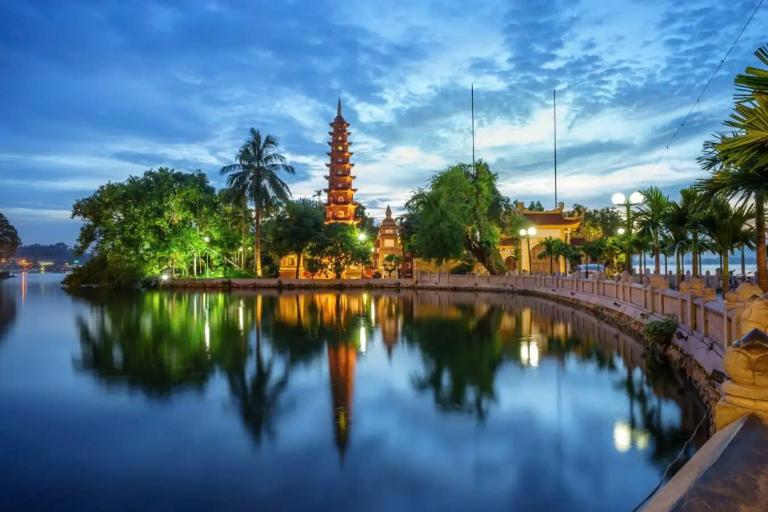
History of Tran Quoc Pagoda
One of the first and most revered religious monuments in Vietnam, Tran Quoc Pagoda is rich in history and has roots in the sixth century. Built during Emperor Ly Nam Đe, the pagoda was first known as Khai Quoc. During this time, Vietnam was establishing its cultural identity and so attesting to its independence, hence this was a very important moment in Vietnamese history.
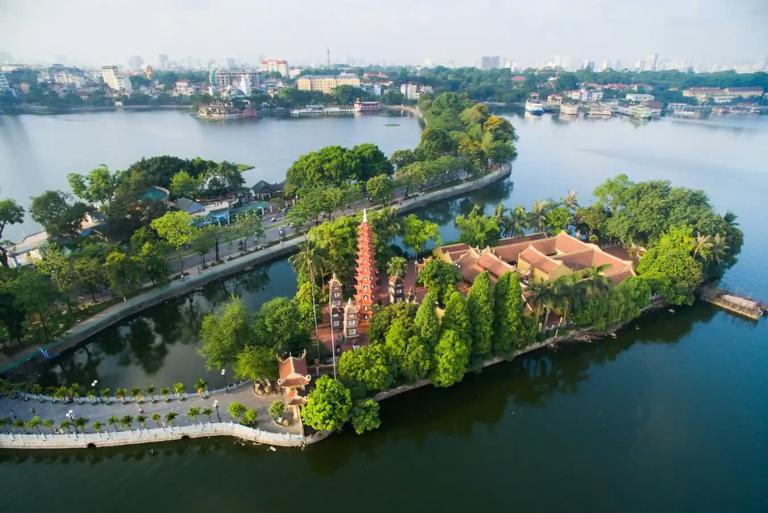
Originally, the pagoda was situated on the banks of the Red River, a location selected for both spiritual and geopolitical relevance. For the inhabitants of northern Vietnam, the Red River has long been a lifeline; putting the pagoda next to its banks represented the flow of life and the dissemination of Buddhism over the area. But the river’s gradual encroachment over time threatened deterioration of the pagoda.
Relocation and Renaming
The pagoda was moved early in the 17th century to its present position on a little island in West Lake in order to protect this significant religious landmark. This action was carried out under the rule of Emperor Le Hy Tong, during a period when Buddhism was tightly entwined with the government and the crown. Reflecting the pagoda’s ongoing significance to the Vietnamese people, this move renamed the structure Tran Quoc, meaning “Protecting the Nation.”
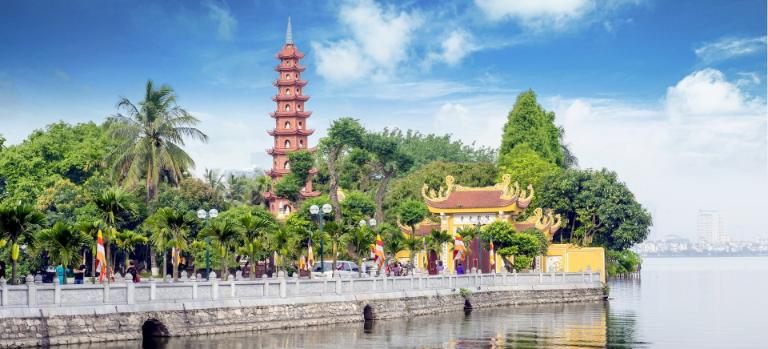
Apart from a better basis, the new site on West Lake improved the spiritual aura of the pagoda. For millennia pilgrims and guests have been drawn to West Lake’s calm waters and verdant environs..
Architectural Evolution and Restoration
Tran Quoc Pagoda has had multiple restorations and modifications over its lengthy life, each adding layers to its architectural and historical value. The most obvious renovation took place in the 17th century when the pagoda was relocated to its present site. Rebuilding the pagoda with materials and techniques more likely to resist the test of time was part of this overhaul.
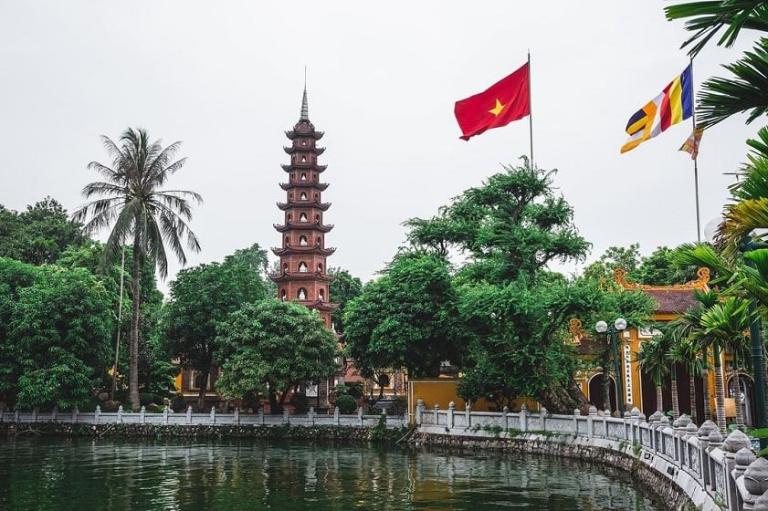
Additional buildings were erected to the complex throughout ages, including the 11-story stupa known as the Bao Thap, which has grown to be among the most recognizable aspect of the pagoda. Built to represent the road to enlightenment, the stumas—which feature several Buddha sculptures—were Every level of the stupa stands for a step on this spiritual path leading to the lotus-shaped pinnacle, a sign of enlightenment and purity.
>>> Let’s see more: Hoan Kiem Lake: Explore Hanoi’s Historic and Cultural Heart
The Role of Tran Quoc Pagoda in Vietnamese History
Apart from providing a place of worship, Tran Quoc Pagoda has witnessed some noteworthy events in Vietnamese history. It was where the kings and nobility would visit during the Ly and Tran dynasties to pray for the nation’s protection and prosperity.
During times of national crisis, such the resistance against foreign invasions, the pagoda came to represent hope and resiliency for the Vietnamese people. The pagoda’s spiritual might was thought to help guard the nation from damage. Tran Quoc Pagoda is today evidence of Vietnam’s ongoing religious and cultural legacy. Drawing guests from all around the world to enjoy its calm beauty and great spirituality, it remains a center of worship, meditation, and historical relevance.
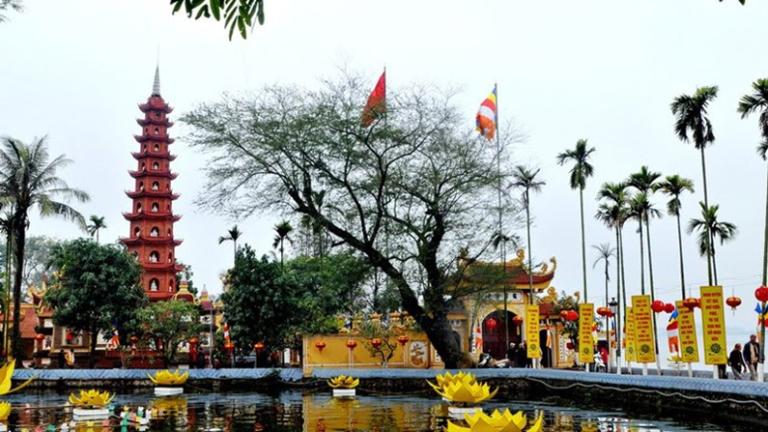
Architectural Marvels of Tran Quoc Pagoda
One very outstanding example of traditional Vietnamese Buddhist architecture is Tran Quoc Pagoda. The architectural beauty of the pagoda lies not only in its separate components but also in the harmonic way in which these parts are combined into a whole to produce a calm surroundings that invites respect and meditation.
The Main Tower (Bao Thap)
The most identifiable feature of Tran Quoc Pagoda is the massive Bao Thap, an eleven-story stumas. Designed masterfully, this tower stands in for the Buddhist road to enlightenment. Little statues of Amitabha Buddha, the Buddha of Infinite Light, who stands for unbounded compassion and wisdom, abound on every level of the stupa.
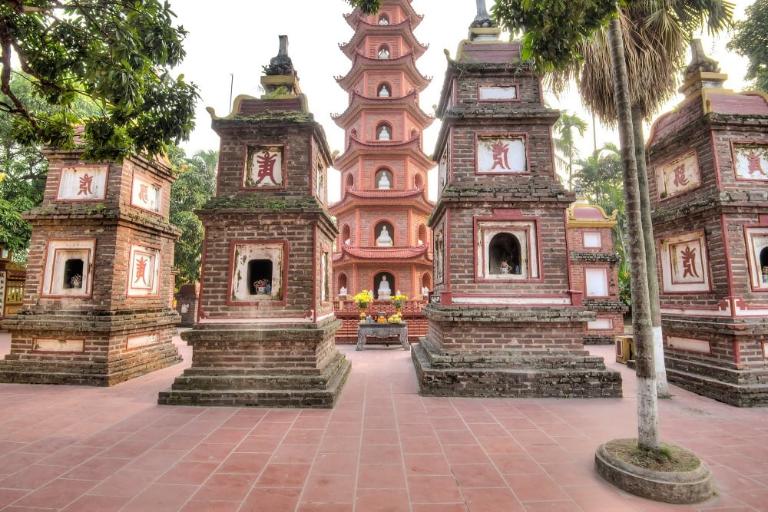
The stupa is painstakingly built, with each layer standing for a particular phase of the road toward spiritual awakening. A nine-story lotus, a Buddhist emblem of purity, crowns the stupa at top. Rising over the stupa, the lotus marks the ultimate aim of emancipation—rising unstained above the filthy rivers of earthly life.
>>> Let’s see more: Discover the Enchantment of Ngoc Son Temple in Hanoi
The Courtyards and Gardens
Comprising the main stupa are the serene courtyards and gardens, which define the quiet ambiance of the pagacle. These well kept spaces have skillfully trimmed bonsai trees that provide visitors a calm environment and rich vegetation. The gardens are not just beautiful; they are essential for the spiritual experience since they provide a place where human spirituality and the natural surroundings interact.
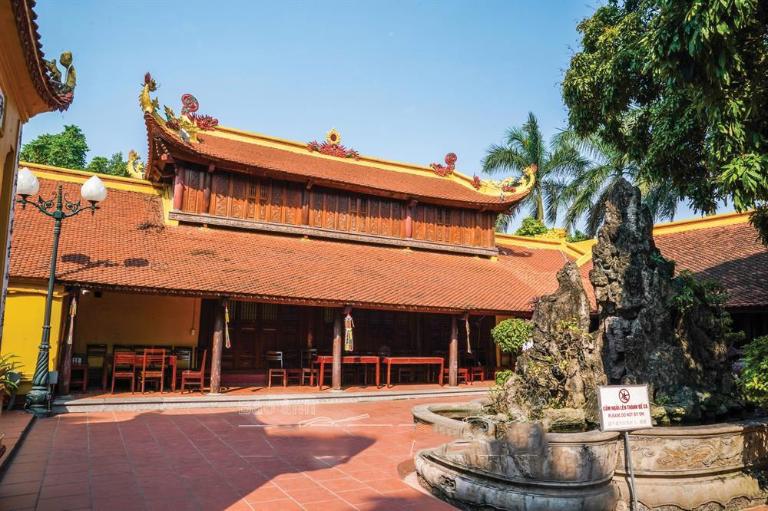
The Bodhi Tree
The Bodhi tree is among the most holy objects on the pagoda grounds since it has great spiritual meaning. Underneath which Siddhartha Gautama obtained enlightenment, this tree is thought to be a clipping from the original Bodhi tree in Bodh Gaya, India. Powerful emblem of enlightenment and spiritual awakening, the Bodhi tree at Tran Quoc Pagoda links the site directly to the historical Buddha.
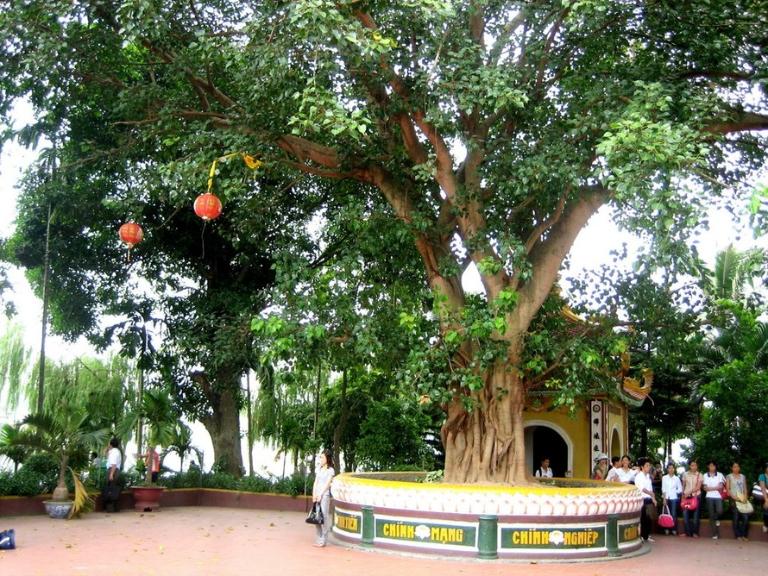
Statues and Artifacts
Rich collection of sculptures and relics reflecting the great religious legacy of Tran Quoc Pagoda is accessible to tourists inside the monument. Respected by their followers, these sculptures represent Buddhist ideas. There are among the collection sculptures of several Buddhas, Bodhisattvas, and Arhats, each having symbolic importance.
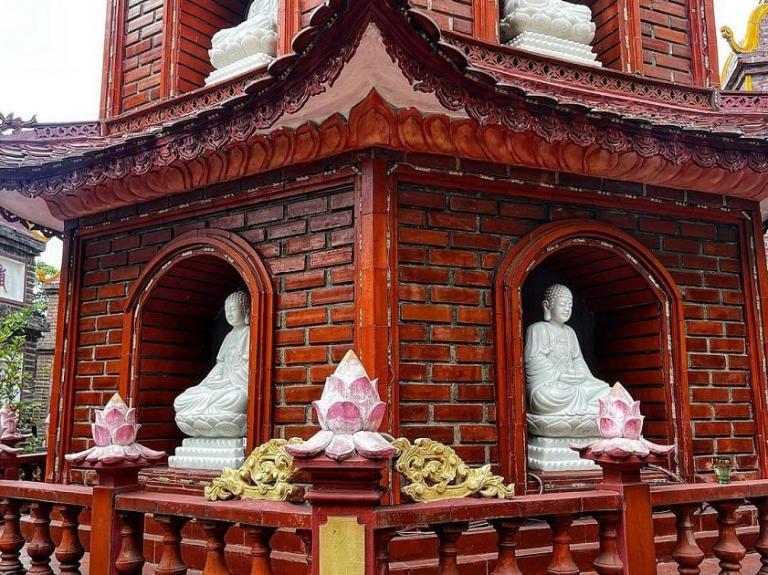
The Golden Lotus Buddha
Among the most honored sculptures in the pagoda is the Golden Lotus Buddha. Designed from priceless materials, this magnificent monument shows the Buddha seated on a lotus flower—a sign of purity and spiritual awakening. In Buddhism, the lotus is a potent emblem that stands for the capacity to rise above muddy waters and stay pure in face of the world’s contaminants. Acting as a reminder of the spiritual road towards enlightenment, the Golden Lotus Buddha reflects this ideal.
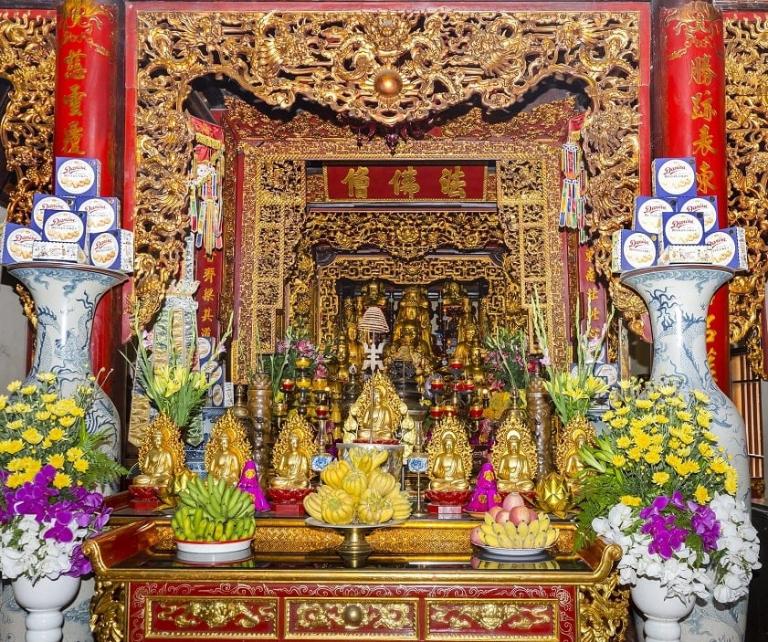
>>> Let’s see more: The Bach Ma Temple: Discover Hanoi’s Spiritual Gem
Intricate Carvings and Decorative Elements
Found all over the site, the pagoda is also renowned for its complex carvings and ornamental accents. Along with traditional Vietnamese themes such dragons, phoenixes, and lotuses, these carvings frequently show events from Buddhist scriptures.

These carvings exhibit amazing workmanship, therefore highlighting the talent and dedication of the creators. From the exquisite artwork on the altars to the intricate patterns on the wooden doors, every element adds to the general holiness and beauty that envelops the pagoda.
The Main Hall
The major location of worship in the complex at Tran Quoc Pagoda is Dai Hung Bao Dien. Many of the religious activities and rites take place here, which also houses the most significant sculptures.
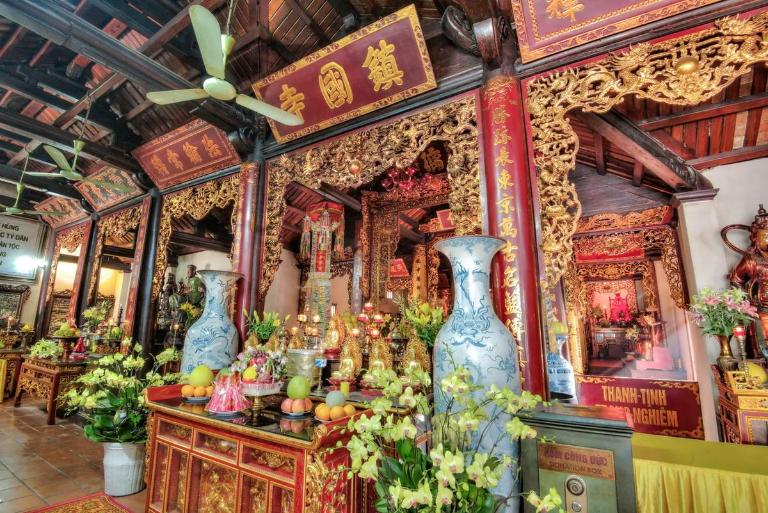
With its lofty ceilings, richly adorned altars, and soft glow of candlelight illuminating the sculptures, the architecture of the main hall is meant to evoke awe and respect. With wooden beams and complex ceiling tiles that evoke grandeur and timelessness, the hall’s architecture reflects conventional Vietnamese architectural ideas.
Religious and Cultural Significance
In Vietnam especially in relation to Vietnamese Buddhism, Tran Quoc Pagoda has great religious and cultural value. Among the nation’s most ancient and respected pagodas, it is a vital spiritual center where centuries-old Buddhist customs and practices endure.
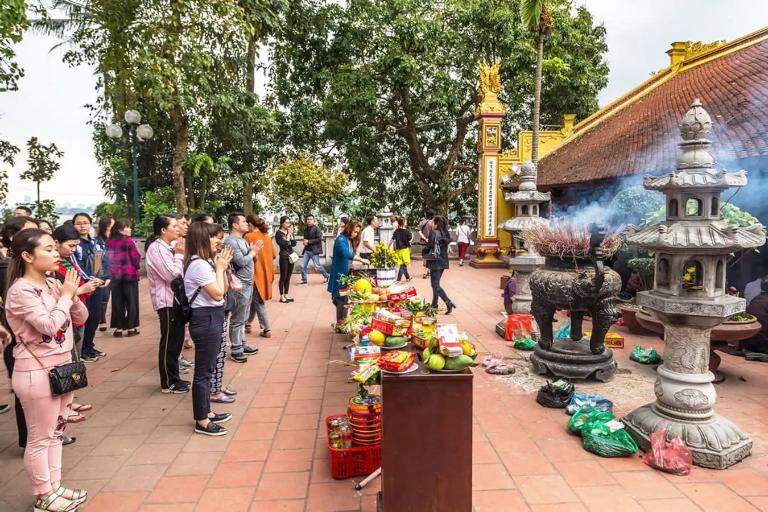
Both Vietnamese Buddhists more generally and the spiritual lives of Hanoi’s people are profoundly entwined with the pagoda Generations of pilgrims have come here to worship, reflect, and find comfort from the demands of daily life. For people looking for spiritual illumination, the pagoda’s serene surroundings and holy aura make it a perfect place.
Tran Quoc Pagoda has carried many significant religious events and rituals over its lengthy existence. Celebrating Buddha’s birthday, or Vesak, is among the most important. Lanterns, flowers, and other decorations cover the pagoda throughout this period, and particular prayers and ceremonies celebrate the life and teachings of the Buddha.
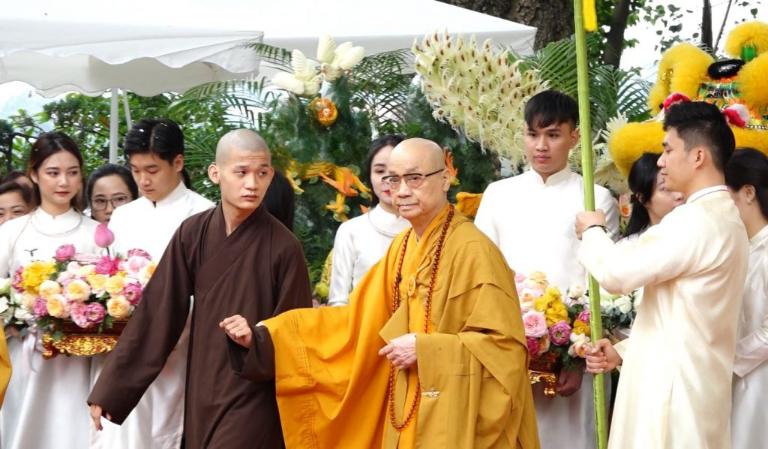
At Tet, the Vietnamese Lunar New Year, the pagoda also takes front stage. The most significant holiday in Vietnam is this one, hence the pagoda takes front stage for festivities. Visiting the pagoda, locals offer incense, pray for luck in the next year, and engage in other age-old events. Families and people gathering to honor their ancestors and pursue blessings for the future create a joyful and respectful environment.
The pagoda’s cultural relevance also stems from its part in advancing Vietnamese Buddhist architecture and art. With its elaborate carvings, statues, and stupas echoing the rich creative legacy of Vietnamese Buddhism, the pagoda itself is a masterwork of traditional architecture. Visitors of the pagoda can discover a collection of old sculptures inside each reflecting many facets of Buddhist ideas. Apart from items of devotion, these relics are priceless cultural gems providing understanding of Buddhism’s evolution in Vietnam.

Moreover, Tran Quoc Pagoda is a site of junction between Buddhist spirituality and Vietnamese cultural identity. It reflects the core Buddhist ideas of resilience, compassion, and peace as well as Vietnamese society. The pagoda reminds us of the continuing force of faith as well as the need of safeguarding cultural legacy against change.
>>> Let’s see more: Co Loa Citadel in Hanoi: A Glimpse into Vietnam’s Ancient Past
Visiting Tran Quoc Pagoda
Visiting Tran Quoc Pagoda transports you to the spiritual and cultural core of Hanoi. One of the city’s oldest and most revered Buddhist landmarks, the pagoda draws a consistent stream of guests all year long. Tran Quoc Pagoda presents a special portal into Vietnam’s spiritual legacy.
Best Time to Visit Tran Quoc Pagoda
Though the Tran Quoc pagoda is open all year round, early morning or late afternoon is the optimum time to visit. The cold morning air and mellow light create a calm environment ideal for introspection and camera work. Both residents and visitors arrive to pay their respects, so the pagoda gets busier as the day goes on. Later in the afternoon visits let you see the breathtaking sunset over West Lake with the pagoda exquisitely silhouetted against the heavens.
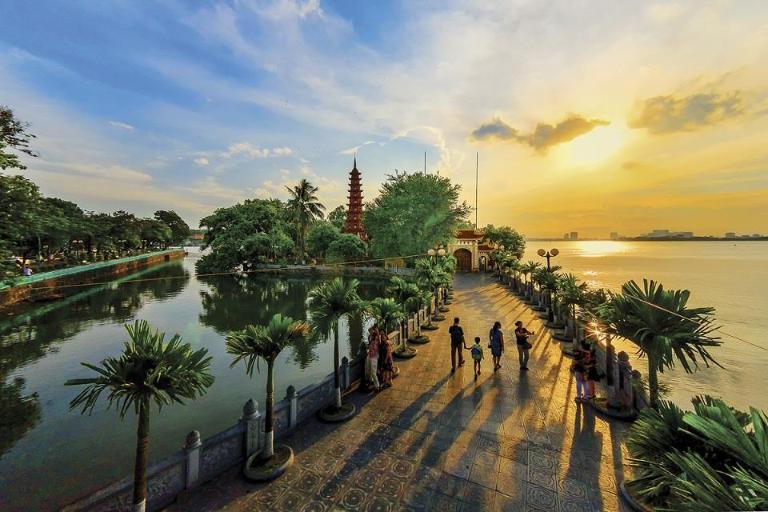
Hanoi’s weather can be somewhat hot and humid, particularly in the summer, hence timing your trip during the cooler hours can help to ensure a more pleasant experience. Particularly nice for visiting is the dry season of November through April, Hanoi’s.
How to Reach Tran Quoc Pagoda
Hanoi travel wouldn’t be completed if you don’t visit Tran Quoc Pagoda. is conveniently close from the city center, about 4 kilometers from the Old Quarter of Hanoi. Depending on your inclinations, there are multiple routes to the pagoda:
- By Taxi: Easily accessible all throughout the city, a taxi is the most practical means to reach to Tran Quoc Pagoda. Traffic dictates how long the Old Quarter trip takes—between 15 and 20 minutes.
- By Motorbike: Renting a motorbike is a common choice for individuals who like a little more adventure. This allows you the liberty to see the area at your own speed. The path to the pagoda is simple, and along it you will have breathtaking views of West Lake.
- By Bicycle or On Foot: If you want a slow bike ride or stroll, think about walking or cycling to Tran Quoc Pagoda. The trip provides an opportunity to see the energetic streets of Hanoi and gorgeous lakefront walkways. When the temperature is cooler in early morning or late afternoon, this choice is more fun.
- In addition, to enhance your experience, you can choose guided tours like Hanoi Motorbike Tours. They will provide a comprehensive overview of Tran Quoc Pagoda’s history and significance.
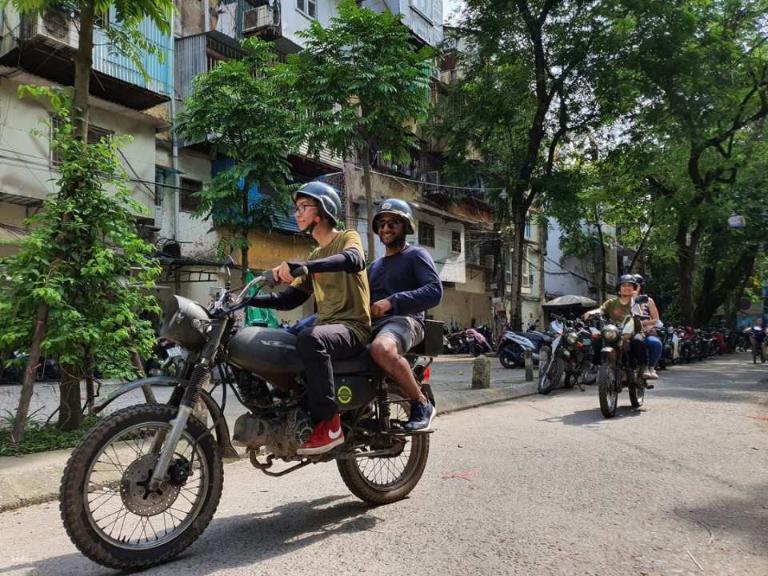
Entrance and Dress Code
Tran Quoc Pagoda is one of the wonderful things about it since it is open to the people for free. Everybody can visit it since there is no entrance cost. Donations are appreciated, though, and will assist the site be maintained.
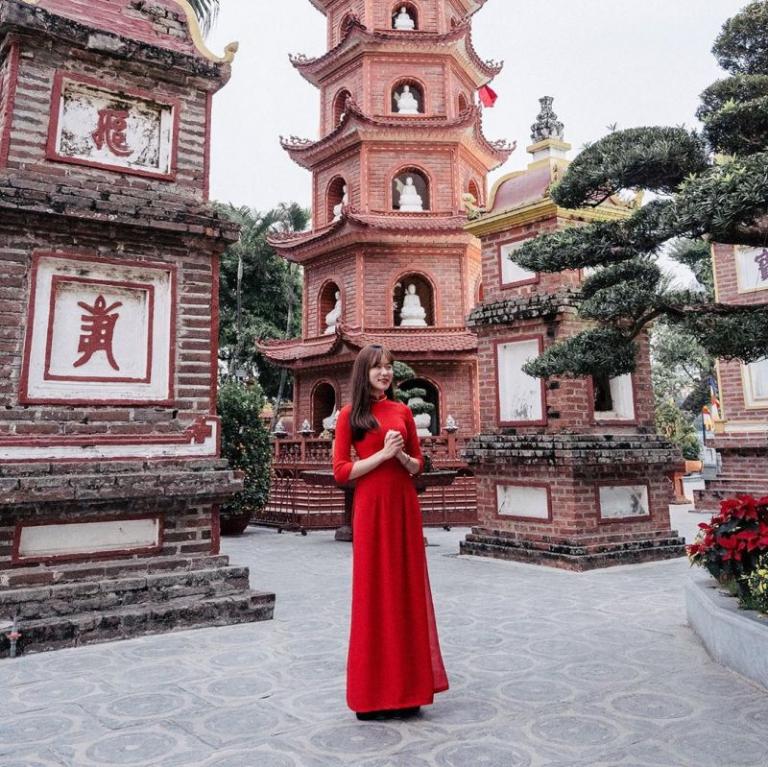
Tran Quoc Pagoda is one of the wonderful things about it since it is open to the people for free. Everybody can visit it since there is no entrance cost. Donations are appreciated, though, and will assist the site be maintained.
Nearby Attractions
Once you have seen Tran Quoc Pagoda, think about seeing some of the neighboring sites that enhance the local cultural diversity. The Ho Chi Minh Mausoleum, where one could learn about the life and legacy of Vietnam’s most renowned leader, is just a short distance away. Another famous Buddhist site, the One Pillar Pagoda, is also near and worth seeing for its distinctive construction and historical relevance.
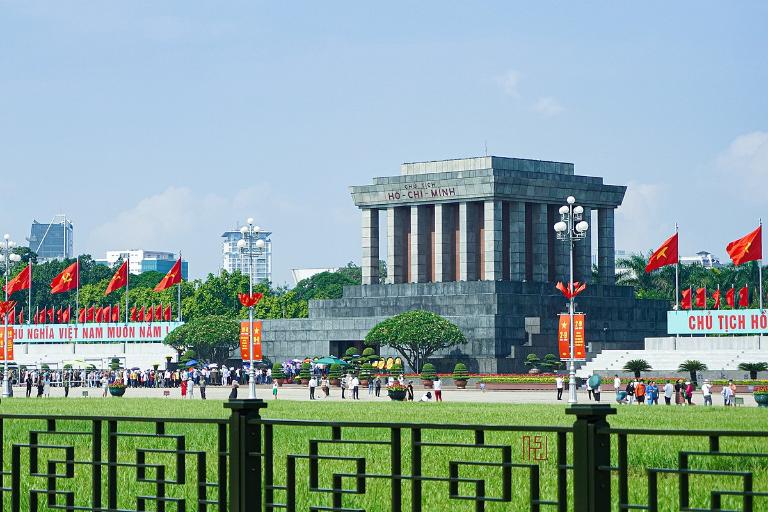
Seeing a historic site is only one aspect of a visit to Tran Quoc Pagoda; another is seeing a live component of Vietnam’s spiritual and cultural terrain. Whether your interests are in the architecture of the pagoda, appreciating the serene surroundings, or seeing the neighboring sites, Tran Quoc Pagoda provides a singular and engaging experience that will last long after you depart.
Related Posts:
- Thang Long Imperial Citadel: Explore Vietnam’s Timeless Heritage
- Hanoi Opera House: A Cultural Gem in Vietnam
- St. Joseph’s Cathedral: Hanoi’s Gothic Masterpiece and Cultural Icon
- Dong Xuan Market: Hanoi’s Vibrant Cultural and Shopping Hub
- Long Bien Bridge in Hanoi: A Historical Icon and Tourist Destination

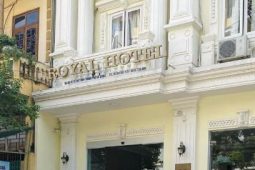

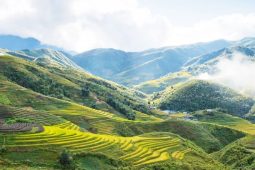

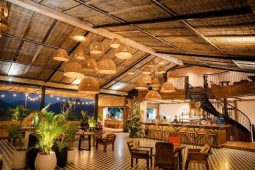
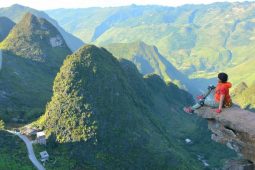
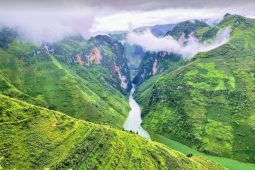

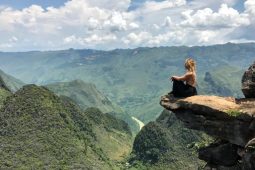
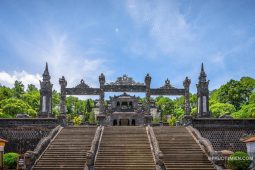
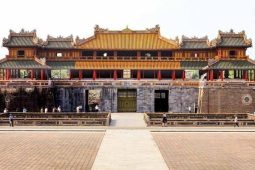

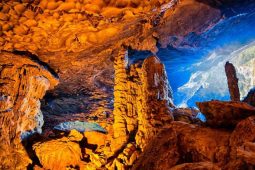
Be the first to comment!